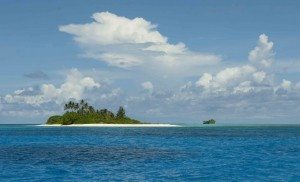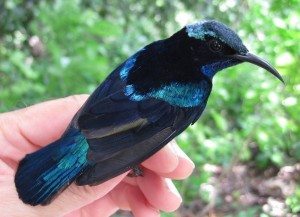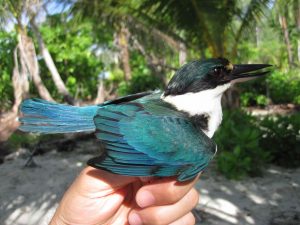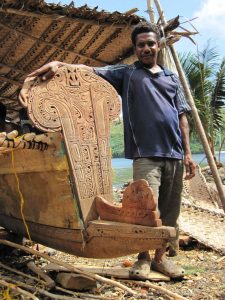Birds and their bugs – a South Pacific expedition
By Jack Dumbacher
(Note: Jack will present slides and describe his expedition to Papua New Guinea on July 19 at our monthly Speaker Series in San Francisco.)
In fall of 2011, I led an expedition to some of the most remote islands off the southeastern tip of New Guinea. The primary purpose of the expedition: To survey the birds on these islands, and collect samples that could be used to study the pathogens that they carry.
Milne Bay Province, where we worked, has over 600 islands. Each represents an independent evolutionary experiment, where birds and other critters arrive by wind and ocean current. Some survive and some don’t. Once isolated, they begin to evolve with the other species that also survived and form their own unique island ecosystem. (And by the way, each one is quite beautiful and photogenic too.)
Our first task was to survey the birds on as many different island groups as we could visit in a two month period. We birdwatched, recorded calls and set up nets to catch birds. We surveyed local villagers and visited their hunting grounds. We tried to take the pulse and assess the health of the bird populations there.

Our second task was to collect samples for studying bird diseases. Birds can carry a variety of tiny “bugs,” including blood-borne malaria species, viruses and other parasites. We mostly sampled blood and took oral and fecal swabs, and brought these back to be screened by virus and malaria experts at U.C. San Francisco and San Francisco State University. By studying many small islands, each with different birds and different diseases, we hope to understand how the diseases are transported from island to island and how they affect avian health.
But mostly, it was a great adventure. To get to these places, we traveled with an amazing French couple who built their own sailboat, we visited traditional island villages where people still build and sail outrigger sailing canoes, we ate local food, and we saw and handled most of the species that are resident breeders on the islands.
————————
Jack Dumbacher, a board member of Golden Gate Bird Alliance, is Chair of the Department of Ornithology and Mammalogy at California Academy of Sciences. The expedition was jointly led by the California Academy of Sciences and the Papua New Guinea National Museum
Join us for more photos and stories from Jack’s expedition on Thursday July 19th.
Birds and Their Bugs presentation: Date: Thursday July 19 Time: 7 p.m. refreshments 7:30 presentation Place: Unitarian Universalist Church & Center 1187 Franklin St. (at Geary) – San Francisco Cost: Free for GGBA members, $5 for non-members



